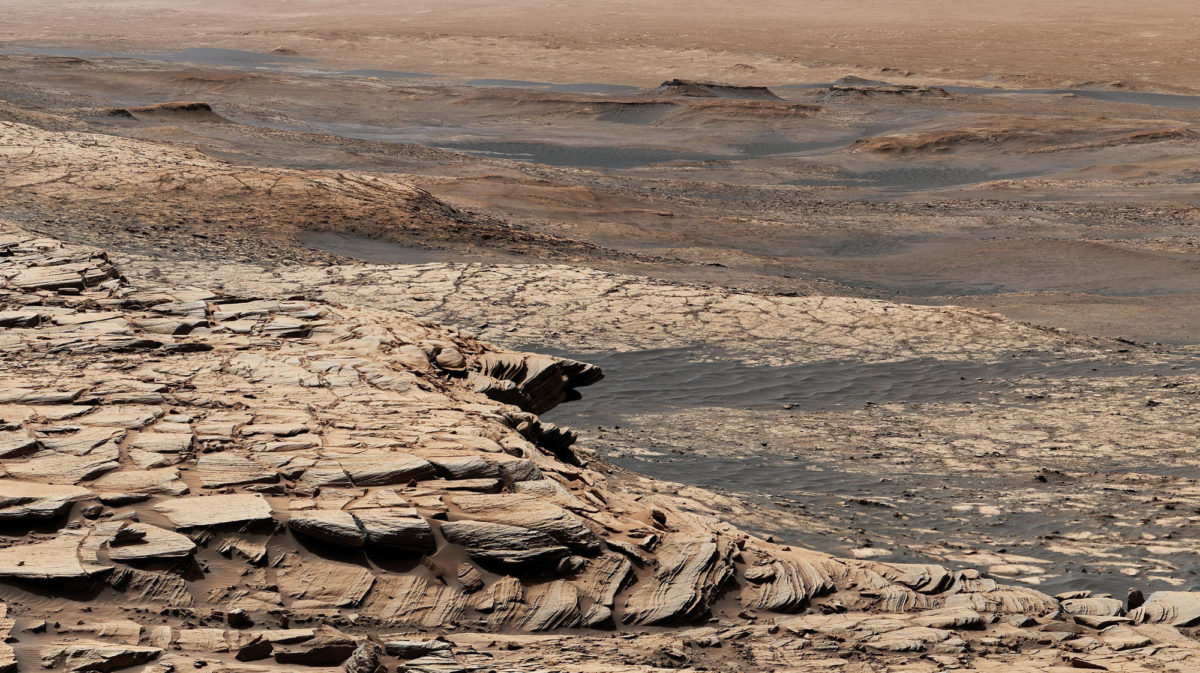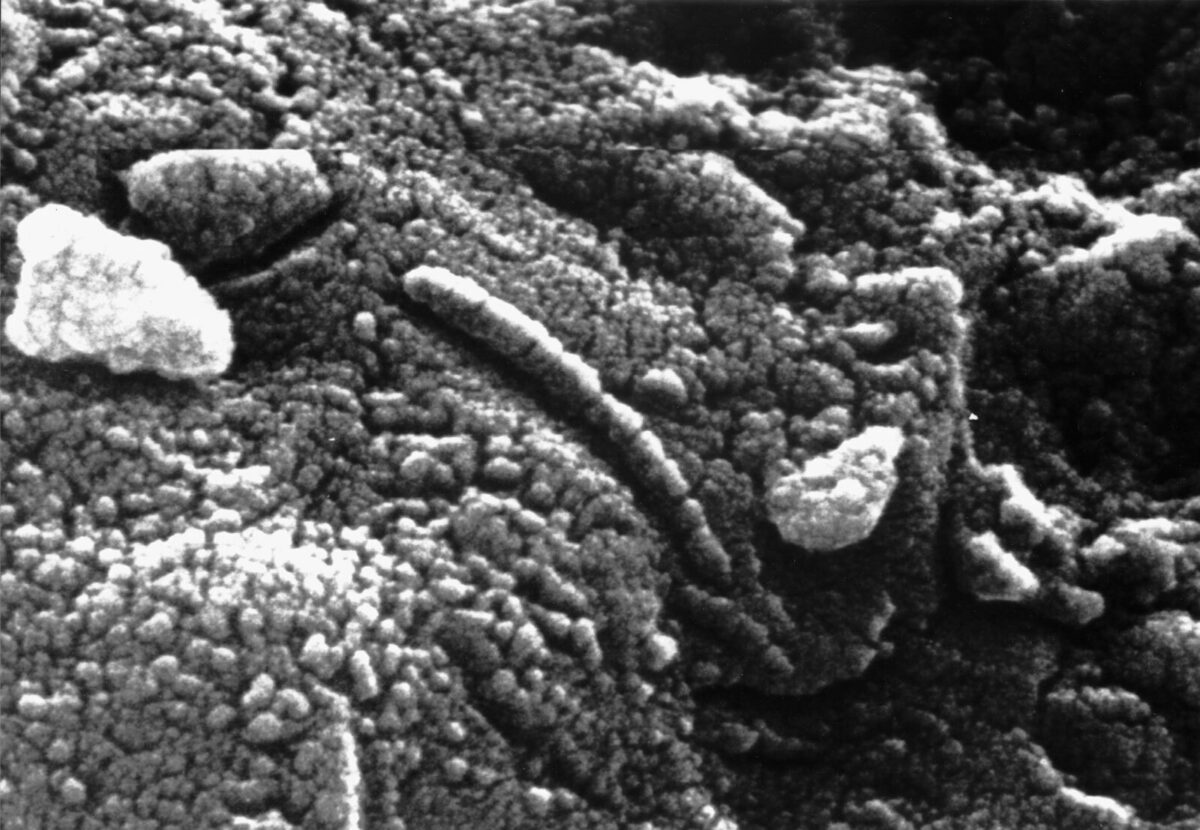Kate Howells • Feb 15, 2021
Life on Mars: Your Questions Answered
Is there life on Mars?
We humans have long been fascinated by this question. In 1895, astronomer Percival Lowel mistakenly documented what he believed were a series of artificial canals crisscrossing the planet. The idea that our neighboring planet might be home to intelligent beings captured imaginations around the world and spurred numerous visions of Mars, some peaceful and others malevolent.
Fast-forward to the present day when humans have sent more spacecraft to study Mars than any other planet beyond Earth. To this day there is no evidence of life on Mars, but the search hasn’t stopped. Just as life itself evolves, so too have the ways we look for it. Today, the red planet is still a prime target in the search for life.

What is Mars like today?
Mars is on average inhospitably cold, with average temperatures of -63° C (-81° F). Summer highs occasionally reach 30°C (86° F), but it's still no picnic; the planet’s atmosphere is 95.3% carbon dioxide, and without a magnetic field its surface is bombarded by the Sun’s radiation. The low atmospheric pressure combined with cold temperatures also mean liquid water is not stable at the surface. Life as we know it cannot exist in these conditions.
What was Mars like in the past?
Mars wasn't always this inhospitable to life. We think Mars once had a molten core that generated a magnetic field. This, in turn, protected the surface from radiation and supported a thicker atmosphere that kept the planet warm.
There is also strong evidence that between 3 and 4 billion years ago, Mars had water on its surface. We can see valleys carved by rivers, pebbles that formed in streams, and piles of sediment that could have come from basins and deltas. Under these conditions, life could have been possible.
About 3 billion years ago, Mars lost its protective magnetic field. Solar radiation stripped off most of the planet’s atmosphere, the liquid water disappeared, and Mars turned into the cold, dry desert we see today.

Did life exist on Mars in the past?
Space missions like NASA’s Curiosity rover have determined that some portions of Mars were habitable for at least some periods of time long ago. But just because something could live there didn’t mean anything did. Without direct evidence of past life, we can't know whether Mars was ever inhabited.
NASA’s Perseverance rover is searching for just that. It is exploring Jezero crater, a former lakebed and river delta, to look for ancient life immortalized in microscopic fossils. Perseverance is also stowing samples for future missions to return to Earth, where laboratories around the world will be able to study them in greater depth.

Does life exist on Mars now?
There is a slim chance that microbial life exists on Mars today, perhaps under the planet’s ice caps or in subsurface lakes detected by spacecraft like the European Space Agency’s Mars Express. Locations like these could protect life from the harsh conditions on the planet's surface.
Because the kind of life that we think could exist on Mars today is microbial, it wouldn’t be spotted by the cameras of an orbiting spacecraft. Instead, there are ways we could detect it indirectly through chemical signatures linked to life called biosignatures.
One such biosignature is methane, which can be created by both biological and geological processes. Curiosity has detected methane near its landing site in Gale Crater, but this isn't conclusive; the European Space Agency’s Trace Gas Express Orbiter has not found signs of the chemical in Mars’ atmosphere.
Could humans bring life to Mars?
When sending spacecraft to Mars to look for signs of life, it’s extremely important to make sure we don’t bring microbes along with us. Even though it takes months for a spacecraft to travel to Mars, hardy microorganisms could potentially survive the journey.
Every mission that lands on Mars must be thoroughly sterilized before it leaves Earth.
Otherwise, instruments looking for signs of life might be fooled by life
that came along with the spacecraft. Even worse, there is a slim but real possibility
that Earthling microbes could survive and thrive on Mars, potentially
interfering with any lifeforms that might already exist there.
The risk of contaminating Mars with Earthling microbes becomes even greater when considering future human missions to Mars. Human bodies are teeming with microbes, and it would be nearly impossible to contain them within a crewed Martian outpost. NASA, international space agencies, and private companies must work together to create planetary protection guidelines that balance the benefits of human exploration with the risk of contamination.

Could life on Earth have come from Mars?
We don’t know exactly how life on Earth began. The panspermia hypothesis suggests that life could have started elsewhere in the universe and traveled to Earth via asteroids, comets, and other small worlds. If Mars was indeed once home to life, it could have seeded our own planet with microbes embedded in Martian rocks that were knocked off the planet by another impactor.
A discovery in 1996 made panspermia seem particularly possible. Scientists studying a Martian meteorite known as ALH84001 found what looked like microbial fossils similar to ones found on Earth. Most experts ultimately agreed that alternative explanations for the structures were possible and that the meteorite was not a definitive indication of life. Nevertheless, the discovery arguably yielded a positive side effect: public excitement spurred investment in Mars research that continues to yield amazing discoveries today.

Support our core enterprises
Your support powers our mission to explore worlds, find life, and defend Earth. You make all the difference when you make a gift. Give today!
Donate

 Explore Worlds
Explore Worlds Find Life
Find Life Defend Earth
Defend Earth

